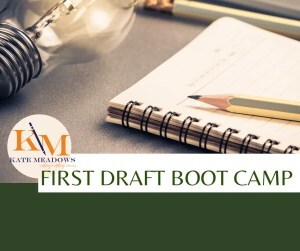3 Ways to Gather Material for Your Memoir
Have you ever thought about writing a memoir? If so, you may have faced this daunting question: Where do I even begin?
This very thing happened at a recent Write-In I hosted. One writer shared that he was trying to tell the story of his life—for his grandchildren. “I’m at that time in my life,” he said, “where this story needs to come out.” The daunting question was: How could he get the story of his life onto the page in any sort of meaningful way?
Most of us don’t walk around with our life story neatly outlined in our minds. Instead, we carry memories like scattered puzzle pieces—some vivid, some blurry, and some we haven’t summoned for years. One way to begin writing your memoir is to gather those pieces and lay them on the table. By bringing your material together—your memories (however cracked, blurry or otherwise imperfect), your experiences, pieces of dialogue, names of influential people in your life—you’re able to see the bigger picture.
But how exactly do you go about gathering that material, especially when the material is all over the place—some of it tangible, some of it intangible?

Gathering material for your memoir can look a lot of different ways. Here are a few ideas to get you started:
1) Mine Your MemoriesStart with what you remember. Memories often surface in fragments—an image, a smell, a phrase someone once said. Don’t worry if memories come out of order or without much detail. Just get them down.
Some writers like to use tools to help organize these fragments. One suggestion is to create an Excel spreadsheet—list keywords, key phrases, and memories. Use multiple tabs if helpful, so you can sort ideas in different ways and literally see your story start to take shape.
Others prefer a more tactile approach for capturing these fragments, such as index cards. Jot down one memory or keyword per card and add as much detail about it on the card as you want. You can sort them later. Different colors of index cards can help you track moods or themes: yellow cards for sad memories, white cards for happy ones, and so on.
Try this: Set a timer for ten minutes and write everything you remember about your childhood kitchen, or your first job, or the day you left home. Or, if you’re a list-maker, try this idea from writer Caroline L.: dedicate one page of a yellow legal pad to a single category. One page might be, “Pairs of Shoes.” Another could be, “Houses I’ve Lived In.” Each category is a window into your world, triggering stories you might not have thought of otherwise.
Writers like Maggie Nelson in Bluets and Sarah Ruhl in 100 Essays I Don’t Have Time to Write show how fragments and lists can become powerful storytelling tools. Your scraps of memory don’t need to be polished or chronological to carry weight.
2) Turn to the ArchivesPieces of our lives are recorded in surprising ways—letters, photographs, social media posts, yearbooks. (In high school, I earned the votes for “Most Integrity” among my classmates; my son was recently voted most likely in his class to start his own business.) These tangible artifacts often spark stories we’ve forgotten. A single photograph might remind you of the family road trip where the car broke down, or that purple cotton rag sweater you wore on the first day of high school.
Some memoirs even take their structure from archives—built around photos, lists, or objects. Kate Carroll de Gutes’s Objects in Mirror Are Closer Than They Appear, for example, uses personal objects as the doorway into story. And Heidi Julavits’s The Folded Clock takes diary entries out of chronological order, showing how memory often circles and folds back on itself. These unconventional approaches remind us that the form of memoir can echo the way memory actually works: nonlinear, layered, textured.
Try this: Pull out an old photo album or scroll through the earliest photos on your phone. Choose one image and write the story around it. Who was there? What happened before and after the picture was taken?
3) Listen to OthersSometimes, the people around us remember moments we don’t—or they saw them from another angle. Family members, friends, and even colleagues can help you fill in the gaps. Listen not only for the story, but for how they tell it. Conversations can also reveal how your story intersects with theirs, which deepens your perspective.
Try this: Ask a sibling what they remember about a holiday gathering or a family move. Their version may differ from yours, but both perspectives are valuable. Memoir isn’t about perfect recall; it’s about truth as you experienced it. When we hear multiple versions of the same story, we realize just how slippery the truth can be. The point is not to determine whose version of the story is “right;” instead, it’s to reflect on how each way the story is remembered contributes to the overall richness of the story.
 If you want to see how this looks on the page, read Elizabeth McCracken’s An Exact Replica of a Figment of My Imagination. The author weaves in voices, echoes, and reflections from others as part of her own story. The result is layered and deeply human.
If you want to see how this looks on the page, read Elizabeth McCracken’s An Exact Replica of a Figment of My Imagination. The author weaves in voices, echoes, and reflections from others as part of her own story. The result is layered and deeply human.
Spreadsheets. Index cards. Yellow legal pads. Old photo albums. Conversations and pieces of dialogue. However you go about it, the key to writing your memoir is to start gathering the pieces of your story. Don’t worry about order or polish yet. Just collect, collect, collect. The more material you have, the richer your “big-picture” story will be.
You can start gathering material for your memoir right now. Choose one of the “Try this” prompts above, set a timer for 15 minutes, and write. And, if you want to take it a step further, gather your material and join me for a First Draft Bootcamp starting Sept. 29. You can find all the details here.
Happy gathering!
Note: Books mentioned in this blog post contain affiliate links. Kate Meadows Writing & Editing receives a small kickback for any books purchased through the above links. We are happy to support the craft of creative nonfiction and the work of the above-mentioned authors.
The post 3 Ways to Gather Material for Your Memoir appeared first on Kate Meadows Writing & Editing.



